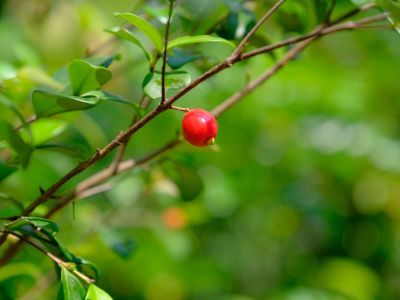Are Beach Cherries Edible?
Beach cherries, Eugenia reinwardtiana, are members of the Myrtaceae family and are related to the lilly pilly berry (Syzgium luehmannii). Beach cherries are shrubs to fairly small trees that grow up to 7 to 20 feet (2-6 m.) in height. The fruit is a tantalizing red/orange with soft flesh surrounding a pit, much like a cherry (hence the name). Can you eat beach cherries though? Yes! In fact, they have a luscious, juicy flavor that tastes like cherry with a hint of grape mixed in.
Beach Cherry Uses
Cedar bay or beach cherries are native to eastern Australia where they are known as ‘bushfood’ or ‘bush tucker.’ They thrive in coastal and rainforest regions and are named after the Cedar Bay in the Daintree rainforest region, a protected, old growth rainforest and bay. In tropical regions, the fruit is sometimes cultivated but is more commonly found growing wild. While Aboriginal Australians have been eating beach cherries for hundreds of years, the fruit has more recently been popularized by people living in these tropical regions. High in antioxidants, the fruit can be eaten as a cherry fresh out of hand or used as a cherry and made into pie, preserves, sauce, and chutney. They can be added to fruit tarts, cakes, and muffins or used to top ice cream or yogurt. The cherries can be pressed to make a delicious sweet-tart juice for use in cocktails or smoothies or to flavor candy. Beyond its ornamental or culinary use, beach cherry wood is tough and makes great firewood. It was also used by the aborigines to make pestles and coconut husking stakes. Beach cherry can be propagated via seed but requires patience. It can also be propagated from hard cuttings, although this process is a bit slow as well. It does not tolerate cold temperatures and definitely does not like frost. Once established, beach cherry can be pruned to maintain shape and size and can even be trained to grow into different shapes, making it a popular ornamental garden shrub.
